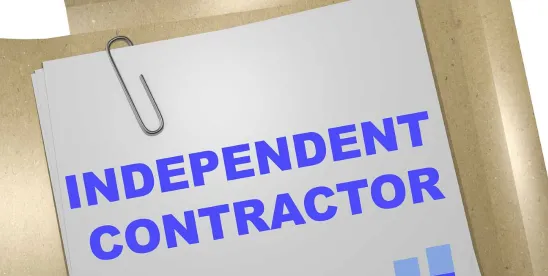On May 1, 2025, the U.S. Department of Labor (DOL) announced it will no longer enforce a 2024 rule on determining independent contractor status.
Quick Hits
- The DOL instructed staff to stop enforcing the Biden-era independent contractor rule.
- Instead, the DOL will rely on a 2008 fact sheet and a 2019 opinion letter.
- The agency is considering rescinding the Biden-era rule, which is part of ongoing litigation.
In a field assistance bulletin, the DOL said it will use the interpretations in the 2008 fact sheet and the 2019 opinion letter to enforce any matters for which no payment has been made to individuals or to the DOL for back pay or civil penalties as of May 1, 2025.
“[T]he 2024 Rule remains in effect for purposes of private litigation, and nothing in this [field assistance bulletin] changes the rights of employees or responsibilities of employers” under the Fair Labor Standards Act (FLSA), the bulletin stated. However, the agency may decide to rescind the 2024 rule, which is facing several lawsuits in court.
The older standard usually gave employers more flexibility to classify workers as independent contractors.
The independent contractor rule has significant financial ramifications for employers. Unlike employees, independent contractors do not qualify for overtime pay, minimum wage, unemployment benefits or workers’ compensation benefits. Independent contractors are not covered by federal employment laws like the FLSA, the Family and Medical Leave Act, and the Americans with Disabilities Act.
Changes to the Independent Contractor Rule
In 2020, the DOL issued a rule establishing an “economic reality” test that focused on two core factors: the worker’s control over the work and the worker’s profit-or-loss opportunity. In some situations, this made it easier for employers to classify workers as independent contractors.
In 2024, the DOL adopted a “totality-of-the-circumstances” framework for evaluating whether a worker should be classified as an independent contractor or an employee. It established six factors to consider:
- the worker’s opportunity for profit or loss;
- the nature and degree of control over how the work is performed;
- the degree of permanence of the work relationship;
- investments made by the worker and the employer;
- the extent to which the work is an integral part of the employer’s business; and
- the use of the worker’s skills and initiative.
Next Steps
In addition to following federal regulations and laws, such as the FLSA, Title VII of the Civil Rights Act of 1964, and the Internal Revenue Code, employers must comply with state-level laws and regulations, which vary significantly by jurisdiction, including what worker classification test is applicable and the enforcement and litigation landscape.
To avoid misclassifying workers, employers may want to ensure that they have up-to-date contracts with provisions that are state-law compliant.
Employers may wish to consider conducting an audit of independent contractor policies and practices and assess potential risk factors and ways to mitigate legal risks. Misclassification can be costly, including back pay, expense reimbursement, civil penalties, and fines.
This article was co-authored by Leah J. Shepherd




 />i
/>i

